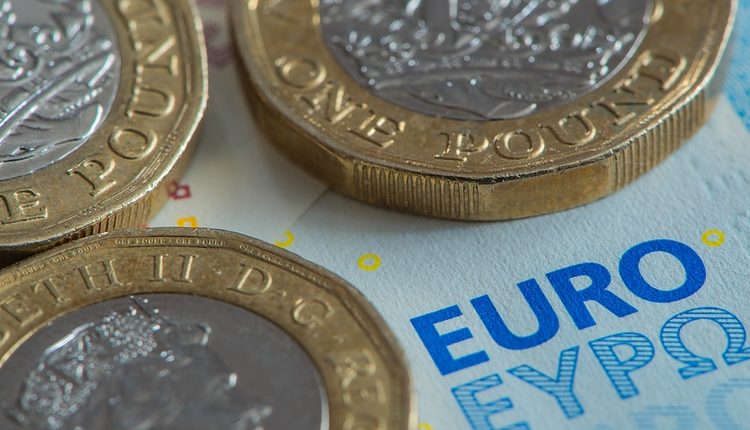- EUR/GBP may depreciate as a recent UK inflation report has strengthened the BoE’s caution regarding rate cuts.
- ECB member Yannis Stournaras remarked that the Eurozone is nearing a sustainable attainment of its 2% inflation target.
- The Euro may face challenges as traders expect the ECB to deliver a 25 basis point rate cut in December.
EUR/GBP appreciates after two days of losses, trading around 0.8340 during the Asian hours on Thursday. However, the upside of the EUR/GBP cross could be limited as Wednesday’s stronger-than-anticipated UK inflation report has bolstered the Bank of England’s (BoE) cautious approach toward future interest rate reductions.
UK CPI inflation surged to 2.3% year-over-year in October, marking a six-month high, up from 1.7% in September and beating forecasts of 2.2%. The monthly CPI increased by 0.6% after remaining unchanged in September. Meanwhile, Core CPI, which excludes the more volatile food and energy prices, climbed to 3.3% over the same period, outpacing market predictions of 3.1%.
Additionally, Services inflation rose to 5%, up from 4.9% in the previous report. If price pressures continue to build, traders may reconsider expectations for interest rate cuts at the BoE’s December policy meeting.
On Wednesday, European Central Bank (ECB) Governing Council member Yannis Stournaras stated that the Eurozone is close to sustainably achieving its 2% inflation target. Stournaras emphasized the responsibility of policymakers to ensure they do not fall short of this goal, according to Bloomberg.
Meanwhile, the EU Financial Stability Review noted that escalating geopolitical tensions and policy uncertainties are intensifying sovereign vulnerabilities while growing global trade disputes heighten the risk of economic shocks.
Since June, the ECB has implemented three rate cuts as inflation edges closer to the 2% target. However, growth forecasts have been revised downward twice. Markets widely expect a 25 basis point rate cut next month, with a smaller probability of a more substantial reduction.
Inflation FAQs
Inflation measures the rise in the price of a representative basket of goods and services. Headline inflation is usually expressed as a percentage change on a month-on-month (MoM) and year-on-year (YoY) basis. Core inflation excludes more volatile elements such as food and fuel which can fluctuate because of geopolitical and seasonal factors. Core inflation is the figure economists focus on and is the level targeted by central banks, which are mandated to keep inflation at a manageable level, usually around 2%.
The Consumer Price Index (CPI) measures the change in prices of a basket of goods and services over a period of time. It is usually expressed as a percentage change on a month-on-month (MoM) and year-on-year (YoY) basis. Core CPI is the figure targeted by central banks as it excludes volatile food and fuel inputs. When Core CPI rises above 2% it usually results in higher interest rates and vice versa when it falls below 2%. Since higher interest rates are positive for a currency, higher inflation usually results in a stronger currency. The opposite is true when inflation falls.
Although it may seem counter-intuitive, high inflation in a country pushes up the value of its currency and vice versa for lower inflation. This is because the central bank will normally raise interest rates to combat the higher inflation, which attract more global capital inflows from investors looking for a lucrative place to park their money.
Formerly, Gold was the asset investors turned to in times of high inflation because it preserved its value, and whilst investors will often still buy Gold for its safe-haven properties in times of extreme market turmoil, this is not the case most of the time. This is because when inflation is high, central banks will put up interest rates to combat it. Higher interest rates are negative for Gold because they increase the opportunity-cost of holding Gold vis-a-vis an interest-bearing asset or placing the money in a cash deposit account. On the flipside, lower inflation tends to be positive for Gold as it brings interest rates down, making the bright metal a more viable investment alternative.
Read the full article here

